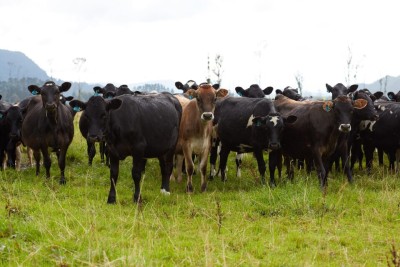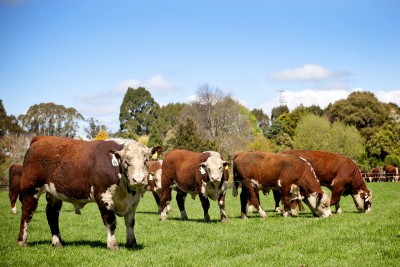 OSPRI Annual Report published
OSPRI Annual Report published
The OSPRI 2023-2024 Annual Report is now available on our website. This report includes a detailed operational and financial summary from the last financial year. While the organisation is in a sound financial position, we do want to draw your attention to a significant financial impairment of $16.6 million in the Consolidated Statement of Comprehensive Revenue and Expenses, which we believe requires explanation.
In early 2024, OSPRI stopped its technology investment programme after cost and delivery overruns. Subsequently an independent review highlighted issues within some of its projects. MyOSPRI, a key project within this programme, aimed to provide a customer portal where users can access electronic Animal Status Declarations (eASD) and in the future, a NAIT replacement and disease management information.
Specialists who conducted an in-depth technical review identified critical design & build issues. The conclusion being that what was built was not fit for purpose and would have unnecessarily high cost to run. In response OSPRI will not be investing anymore on the MyOSPRI platform and instead will initially focus on rebuilding the NAIT system. We will leverage valuable user-interface design work completed with farmer input as we develop the new system.
The financial statements for the year ending 30 June 2024 report a $16.6 million non-cash impairment of the MyOSPRI asset, equally allocated to NAIT and TBfree’s balance sheets. This is a very disappointing outcome for OSPRI, and we unreservedly apologise to our stakeholders for this financial impact. We are working hard to rebuild the balance sheet through driving better efficiency and savings. But we can assure stakeholders we are still able to fully deliver our programmes.
We have also implemented essential governance changes in collaboration with our shareholders—DairyNZ, Beef + Lamb NZ, Deer Industry NZ, and funder MPI. These changes aim to enhance accountability and oversight following the challenges identified in our technology programme. A Shareholders and Funders Group has been established to oversee board performance and director selection, ensuring that our governance structure is fit for purpose. Additionally, the Stakeholders’ Council has been replaced with a Stakeholder Forum, which will meet at least twice a year to engage stakeholders and gather feedback on OSPRI’s operations.
 Governance Changes at OSPRI
Governance Changes at OSPRI
OSPRI has announced the resignation of Board Chair Dr. Paul Reynolds, who has served in this role since November 2023.
During his tenure, Dr. Reynolds oversaw significant milestones, including the successful transition of the Mycoplasma bovis (M. bovis) programme from the Ministry for Primary Industries (MPI) to OSPRI under a Government-Industry Agreement. Under his leadership, the programme received approval to operate under a National Pest Management Plan.
Additionally, there has been progress in both the volume and accuracy of NAIT traceability data, alongside ongoing success in the TBfree programme, which is currently reporting the lowest number of infected herds in its history. Efforts to achieve TB freedom in wildlife are also meeting established targets.
“The timing of my resignation feels right for me and for OSPRI,” said Dr. Reynolds. “There have been challenges along the way, but I am incredibly proud of what we have achieved together. I look forward to spending more time in my hometown of Gisborne and visiting family abroad. It has been a rewarding experience working with such dedicated and talented individuals. I’m confident OSPRI is in good hands as it moves into its next chapter.”
A new Chair will be appointed following OSPRI’s Annual General Meeting (AGM) in November 2024 and in the interim Fenton Wilson will chair the Board.
Other Board changes include the appointment of Mark Todd, Alex Guilleux, and Hugh Martyn from November 1 and Louise Cullen and Tony Cleland will join the Board to replace James Parsons and Fenton Wilson who complete their tenure.
Shareholders have also made changes to the constitution through the establishment of a Shareholders and Funders Group with senior representatives from B+LNZ, DairyNZ, DINZ, and MPI. This group will oversee board performance and director selection, creating a foundation for more direct accountability.
The Stakeholders’ Council has been replaced by a Stakeholder Forum, which will meet at least twice a year to act as a sounding board and feedback mechanism for the OSPRI Board and management. The previous roles in director appointments and accountability now sits with shareholders and MPI.
 Spring bull sales - keep NAIT up to date
Spring bull sales - keep NAIT up to date
Spring bull sales are a busy period for animal movements as farmers bring them on-farm for mating. Make sure to do your bit to help support traceability by recording your movements in NAIT.
Sending service bulls off-farm
If you're sending bulls off-farm, as the PICA you need to:
- make sure they are tagged and registered in NAIT
- record a sending movement in NAIT within 48 hours of the animals leaving your farm
- complete an Animal Status Declaration (ASD)
- if the animals are located in a Movement Control Area (MCA), complete a pre-movement TB test within 60 days of the animals moving.
Buying or leasing service bulls
If you're receiving bulls on your farm, you need to:
- check that the bulls coming on to your farm are:
- tagged and registered in NAIT, and
- tested for TB within the last 60 days, if they're from a MCA
- receive an ASD form from the sender or seller
- record or confirm the receiving movement in NAIT within 48 hours of them arriving on your property.
We've created an interactive checklist to help you meet your obligations when moving bulls this Spring. For the checklist and more information, visit our Bull Movements page.
 Transition of the M. bovis Programme
Transition of the M. bovis Programme
On behalf of MPI, OSPRI has been delivering the day-to-day operational and disease control functions for the M. bovis Programme for almost a year - under a Government Industry Agreement between MPI, DairyNZ and Beef + Lamb New Zealand.
With the task of eradicating M. bovis expected to be incorporated within a National Pest Management Plan (NPMP) in early 2025, it would mean the transition of full programme responsibility to OSPRI. We expect this transition to be smooth and we’ll keep you updated.
M. bovis national surveillance update
Our national surveillance, through livestock and bulk tank milk (BTM) testing, remains an important tool. It continues to protect all farmers by finding any underlying disease and provides the data we need to build confidence that M. bovis is no longer present in our national cattle herd.
Bulk Tank Milk (BTM) screening
Our BTM screening programme takes samples each month as part of the normal milk collection process.
Samples are screened for M. bovis antibodies. A detect result is not confirmation of infection, but it does mean further investigation is required to determine the true infection status of the herd. A very small proportion of herds that have a detect are found to be infected – this last occurred in August 2023.
From July - September, our BTM screening programme tested samples from 10,280 farms.
A total of 95 farms returned detect results of which:
- 89 farms required on-farm investigation following risk assessment
- 87 farms were found to be not infected following on-farm investigation
- 2 farms are currently undergoing on-farm investigation.
The link below has more information on BTM screening.
National Beef and Drystock Surveillance
The National Beef and Drystock Surveillance programme screens blood samples taken either at meat processing plants, or on-farm when cattle are yarded for routine management activities.
From July to September, 63,238 animals were sampled by the National Beef and Drystock Surveillance programme. These include results reported from:
- Approximately 202 properties sampled on farm
- Approximately 2,133 meat processing plant suppliers.
The link below has more information.

